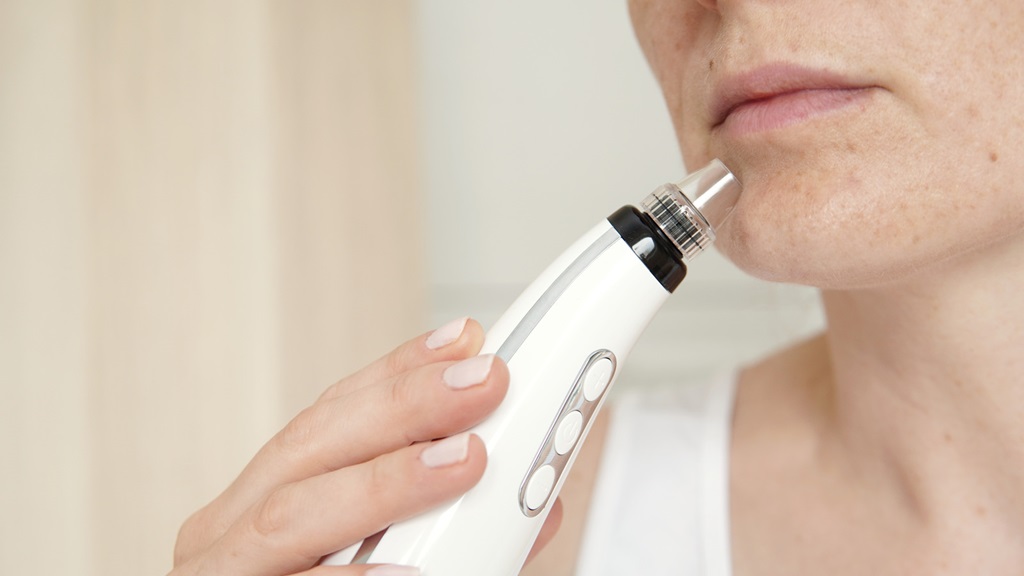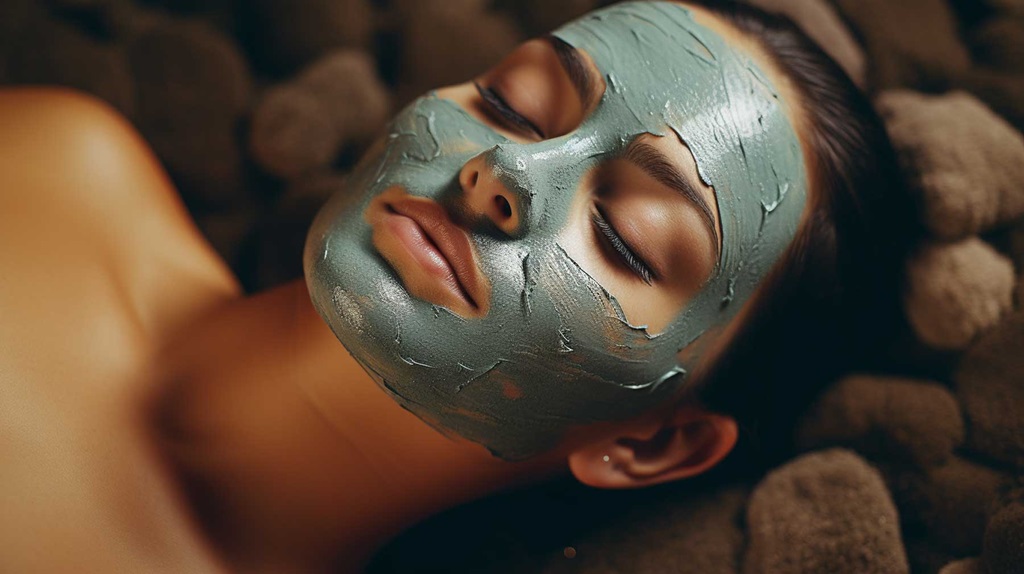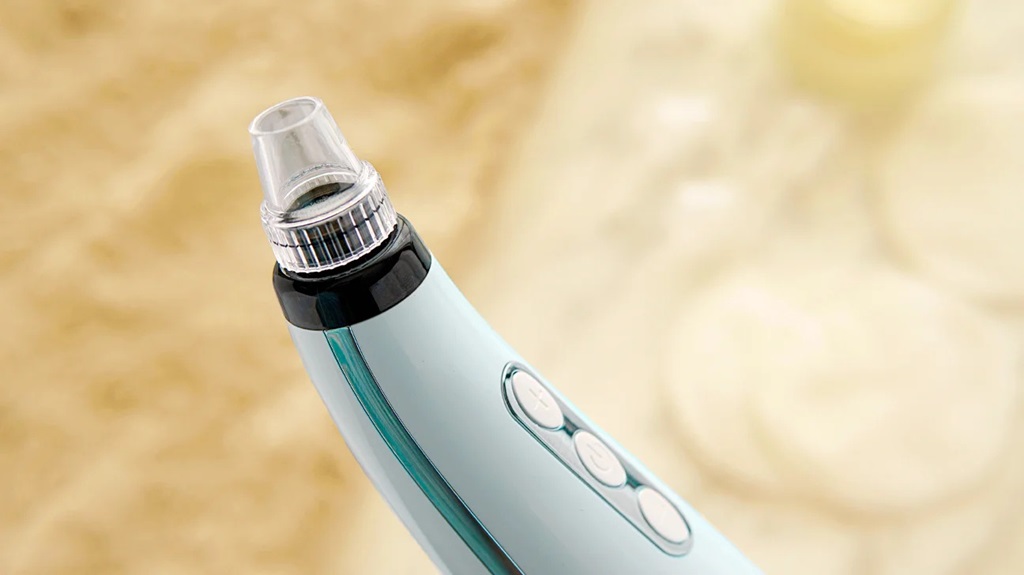A face vacuum, also called a pore vacuum or blackhead vacuum, is a handy little device that can help suck out dirt, debris, blackheads, and oil from deep inside your pores, leaving your skin cleaner and fresher. Unlike scrubs or strips, a face vacuum uses gentle suction to literally pull gunk out of your pores so it can’t get trapped and cause breakouts.
With regular use, a quality face vacuum can thoroughly cleanse your pores, eliminate blackheads, minimize the appearance of pores, and leave your complexion looking clear and vibrant. However not all face vacuums are created equal, and improper use could lead to broken capillaries or blemishes if you aren’t careful.
If you want to incorporate this handy skincare device into your regular routine, read on. In this comprehensive guide, we’ll cover everything you need to know, from choosing the right face vacuum to using it safely and effectively for optimal results.
How Do Face Vacuums Work?
A face vacuum uses a small vacuum to suction out dirt, debris, dead skin cells, sebum, and germs that get trapped deep in your pores and lead to blackheads and acne breakouts.
It works through a combination of suction and microcrystal exfoliation. Here’s a quick rundown:
- Suction – The gentle vacuum pressure pulls out all the gunk lodged deep within your pores that regular cleansing can’t reach. This clears and shrinks the pores while removing blackheads and preventing new ones from forming.
- Microcrystal Exfoliation – Many face vacuum heads also contain microcrystals that provide light physical exfoliation to lift away dead skin cells. This further cleans congested pores while giving your face a gorgeous glow.
- Improves Product Absorption – Removing pore-clogging debris also allows your other skin care products like serums and moisturizers to better penetrate and absorb into the skin.
Regular use of a face vacuum keeps pores clean, blackhead-free and minimized in size. And cleaner pores allow the rest of your skincare routine to work even more effectively.
Benefits of Using a Face Vacuum
Using a face vacuum as part of your skincare routine provides a wide range of skin-enhancing benefits, including:
- Unclogs pores and removes blackheads
- Minimizes the look of enlarged pores
- Exfoliates away dead skin cells
- Sucks out impurities like dirt and oil
- Prevents new blackheads from forming
- Allows better absorption of skincare products
- Leaves skin clean, smooth, and glowing
Because a face vacuum cleans so deeply into the pore, it can eliminate blackheads and prevent new ones much more effectively than scrubs, strips, or simple cleansing alone.
With regular use, you’ll notice cleaner, clearer skin with dramatically reduced blackheads and pore size. Many people also see improvements in fine lines, acne breakouts, skin texture, dullness, and radiance.
What to Look for in a Face Vacuum

There are countless different face vacuum tools available today, ranging hugely in features and pricing. Not all models are created equal, so you want to choose carefully to get the best results (without overpaying).
Here are the key features to look for when selecting a face vacuum:
Adjustable Suction Levels – Multiple suction levels allow you to customize the intensity to your comfort and skin’s needs, preventing damage from suction that’s too strong. Most devices range from 5,000 to 25,000 Pa of suction pressure. Look for at least 3 adjustable levels.
Microcrystal Attachment Heads – Microcrystals on the attachment head provide gentle physical exfoliation while the vacuum suctions out the gunk. This gives a deeper clean. Some heads also have small brushes to help dislodge debris.
Different Size Attachments – Multiple attachments in different sizes ensure you can effectively vacuum all areas of the face, like delicate areas around the nose and larger expanses like the chin and cheeks.
USB Rechargeable – A built-in rechargeable battery is far more convenient and eco-friendly than constantly replacing disposable batteries required by some models. Just charge via USB between uses.
Skin Sensor Technology – Advanced safety features like built-in skin sensors automatically reduce suction pressure if you press too hard, preventing pain, bruising, or broken capillaries.
Premium Design – Avoid flimsy plastic! Look for durable, ergonomic designs with steel handles and heads for better suction, grip, and longevity. The motor should be powerful yet quiet.
High-quality materials, adjustable suction levels, various attachment sizes, built-in batteries, and safety sensors justify a slightly higher price point. A good face vacuum should cost between $40-$100 USD. Very cheap models likely won’t have the features and power to deeply cleanse pores properly.
How to Use a Face Vacuum Safely and Effectively
Using your face vacuum correctly is crucial for getting all the gunk out of your pores while preventing damage to the skin. Follow these steps for the best results:
- Cleanse Skin – Remove all makeup, oils, and residue first so the vacuum can work directly on your pores. Use a gentle cleanser suitable for your skin type.
- Steam Face – Steam for 5-10 minutes to open pores and soften debris stuck inside, making it easier to vacuum out.
- Select Lowest Suction – Always start gently and increase suction gradually as needed. Advanced models automatically prevent you from using too much force.
- Glide Over Skin – Gently glide the attachment across areas with blackheads and congested pores using light, circular motions. Do not press hard into the skin.
- Focus on Each Area Briefly – Spend about 10-15 seconds total over each area of the face before moving on, concentrating on problem spots. Don’t overdo any single area to avoid damage.
- Work from Center Outward – Start on the nose, chin, and forehead then vacuum outward toward the hairline and cheeks. This technique improves circulation.
- Rinse After Use – Rinse face with lukewarm water when finished vacuuming to wash away the sucked-out gunk.
- Moisturize – Apply a hydrating moisturizer suitable for your skin type to soothe skin and keep it soft and glowing. Light hydration allows pores to remain nicely cleansed.
- Clean Device Properly – Always sanitize vacuum heads and handles after using with alcohol to prevent bacteria buildup.
- Use 2-3 Times Per Week – Limit vacuum sessions to every 2-3 days max to avoid over-exfoliating delicate facial skin. Listen to your skin.
Be very gentle when vacuuming around the delicate eye, lip, and neck areas. Careful, precise technique prevents pain, broken capillaries, or other damage. Always adjust suction down to the minimum for these zones.
With a quality face vacuum and proper technique, you’ll suck debris from the deepest depths of pores for clear, radiant skin free from embedded blackheads and congestion.
Face Vacuuming Tips and Precautions

While extremely effective for blackheads and minimizing pores when used correctly, face vacuums can damage the skin if not handled with care or caution.
Keep these important tips and precautions in mind:
- Test suction on your arm first to gauge comfort level before putting it on the delicate skin of your face.
- Start on the lowest pressure setting and increase suction slowly only as needed.
- Do not vacuum over active breakouts, wounds, extremely dry patches, moles, or raised areas.
- Apply moisturizer after use to counteract potential dryness from suctioning.
- Limit vacuum sessions to 2-3 times max per week to avoid irritation.
- Clean the device thoroughly between uses and replace attachments every 3-6 months.
- Stop immediately if the skin becomes red, inflamed, or painful. Slow down suction.
- Not recommended for those with extremely sensitive skin or rosacea.
- Consult a dermatologist before using if you have severe acne, eczema, or other skin conditions.
While rare if used correctly, potential side effects include:
- Redness, irritation, inflammation
- Broken capillaries or petechiae (tiny burst blood vessels)
- Bruising around treated areas
- Skin discoloration
- Scarring from wounds or active acne pulled into the device
Report any negative reactions to your dermatologist. As always when trying new skincare technology, proceed cautiously and adjust settings appropriately for your personal skin tolerance.
How Often Should You Use a Face Vacuum?
There’s no definitive rule for exactly how often to use your face vacuum. The ideal frequency depends on your skin type, sensitivity levels, severity of congestion, and personal preferences.
As a general guideline, aim to vacuum your face 2-3 times per week maximum. Any more than that risks irritation, inflammation, and damage from over-exfoliation.
Listen to your skin – if it feels tight, raw, or painful after vacuuming, it’s time to take a break for a few days back off if you see redness, scratches, or broken capillaries.
If you have oily, acne-prone skin with chronic blackheads, you may be able to vacuum more frequently than those with dry or sensitive complexions. But never use a pore vacuum daily or even back-to-back days.
Many dermatologists recommend alternating your vacuum sessions with other treatments like masks, peels or facial steaming for a balanced approach. Or you can use the vacuum on “spot treat” mode to target only blackhead-prone areas like the nose and chin when needed between full facial sessions.
Build your vacuum usage up slowly when first incorporating it into your routine. Pay close attention to how your skin looks and feels afterward so you can adjust frequency accordingly.
Face Vacuuming vs. Facials – Which Is Better?

Both face vacuums and traditional facials can deep clean pores, exfoliate the skin, eliminate blackheads, and leave you glowing. But they work in different ways.
Face vacuums use suction to literally suck all the accumulated gunk out of your pores. The vacuum heads may also contain exfoliating microcrystals to slough off dead cells.
Facials rely on estheticians to perform professional-grade cleansing, steaming, extraction, and exfoliating treatments tailored to your specific skin. High-quality products are worked deeply into the skin.
Face vacuums provide a quick, convenient DIY cleansing option you can easily do anytime at home. However hands-on professional extractions done by a skilled esthetician can be more precise and thorough when tackling tricky blackheads.
For best results, incorporate both techniques into your regular skincare routine. Use the face vacuum 2-3 times per week to maintain clean pores and exfoliate. Then get a facial every 4-6 weeks to treat stubborn blackheads and reap the benefits of customized professional treatments.
The convenience of at-home vacuuming combined with the skin-pampering luxury of periodic facials makes an unbeatable pairing for gorgeous glowing skin!
The Last Word
When used correctly, a face vacuum can be an incredibly effective addition to your skincare routine. The suction action pulls out embedded blackheads, dirt, and oils from the depths of your pores to prevent clogging, acne, and enlargement over time.
Choose a high-quality rechargeable model with adjustable suction levels and multiple attachment head types. Carefully glide over clean dry skin using circular motions. Start on the lowest pressure setting and increase gradually only as tolerated, avoiding any inflamed or broken areas.
Limit vacuum sessions to 2-3 times weekly and moisturize after use for happy skin. Combine with periodic professional facials for enhanced results. Wield your new face vacuum gently and watch your pores transform from congested to squeaky clean!
FAQs
-
Are face vacuums safe for all skin types?
Face vacuums are safe for most skin types when used properly, but those with highly sensitive skin should exercise caution. Avoid vacuuming over broken, irritated, or very dry areas. Start with the lowest suction and discontinue use if any pain or discomfort occurs.
-
Can I vacuum over acne, pimples, or blemishes?
Never vacuum directly over top of active breakouts, wounds, or especially inflamed blemishes as this can spread infection. Wait until breakouts fully heal before attempting to vacuum, and avoid picking at the skin first. Vacuum gently around (but not directly on top of) healing acne.
-
Why does my skin look red after using the face vacuum?
Mild redness immediately after vacuuming is normal and should fade after an hour or less. But more extreme redness, itching, irritation, or visible broken capillaries mean the suction level was too harsh. Turn the suction down and discontinue use if moderate redness persists beyond a day. Always moisturize after.
-
How close can I get to my under-eye area?
Use extreme care when vacuuming around the delicate under-eye zone. Never vacuum directly on top of the upper eyelid itself. Keep attachment just below lower lashes hovering over undereye bags and orbital bone. Maintain very light pressure and minimum suction to avoid pain or broken capillaries.
-
Can I vacuum too much and enlarge the pores?
You cannot manually enlarge pores with a vacuum. However over-vacuuming can irritate skin and trigger oil production, indirectly causing pores to appear larger. Stick to 2-3 times weekly max and moisturize after to prevent this. Your pores will remain clean and tightened.





